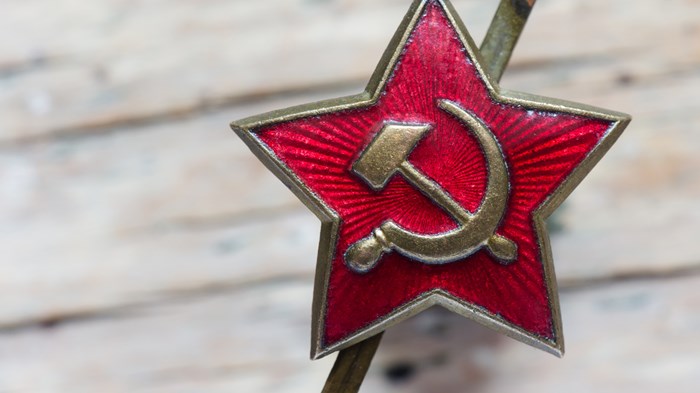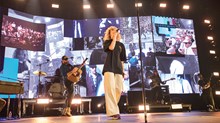
To understand Karol Wojtyla (John Paul II's birth name) and his part in the collapse of Communism is to remember this man lived under oppression and tyranny for much of his life. Wojtyla had barely turned 19 when Nazi Germany invaded Poland in September 1939, and the regime forced him into manual labor, first as a quarryman and blaster, and later as a factory worker in a chemical plant. But Wojtyla refused to bow to Nazi propaganda; he joined UNIA, a broad-based armed resistance movement trying to save Jews from the Holocaust. Later, he entered an underground seminary, where Adam Sapieha, archbishop of Krakow, reinforced and guided his thinking about human dignity and freedom.
Yet Soviet "liberation" of occupied Poland brought only further repression. And for 33 years, Wojtyla would promote Christianity and religious freedom under threat of a regime attempting to squash any opposition to atheistic totalitarian rule. Rising to the position of archbishop of Krakow in 1963, he carefully avoided direct criticism of the government, but spread his philosophy of Christian "humanism" through a series of poem-cycles that, in effect, worked to undermine the Marxist foundation of Communism. Yet clashes were inevitable—he encountered fierce opposition in his efforts to create 11 new parishes through door-to-door evangelism, and Soviet authorities tried to stop him from publicly leading Catholics in Poland's Corpus Christi procession, a medieval feast day celebrated every June.
Wojtyla's election as pope in 1978 armed him with an international following that, in retrospect, cowed even the Soviet empire. "Be not afraid" became his rallying cry, and following a 1979 address to the U.N. General Assembly in which he challenged the free world to defend human rights, he embarked on a courageous but dangerous nine-day public pilgrimage to "strengthen the brethren" in Poland. There he warned Communist authorities that the papacy would watch them closely, and he reminded them of their responsibility "before history and before your conscience." The people responded to John Paul II's visit with loyalty borne of years of shared suffering—banners with the Communist party slogan "The Party Is for the People" sported the daring addition, ". . . but the People are for the Pope."
John Paul II's example encouraged other leading church authorities, such as the Czech Cardinal Frantisek Tomasek, to become fierce critics of Communism. His visit also inspired an unemployed electrician named Lech Walesa to form in 1980 the Soviet Union's first and only trade union—Solidarity—that in the words of French political scientist Alain Besancon gave the Poles back "the private ownership of their tongues." Soviet authorities feared Solidarity could undermine Soviet power, and the Warsaw Pact planned an invasion and mass arrest of Solidarity's leaders. John Paul II intervened by writing directly to Soviet president Leonid Brezhnev, giving his support to Solidarity and warning against the consequences of such an action. While this only delayed a crackdown, the pope had set a precedent. In 1989, when Solidarity swept available seats in a semi-free election, no one doubted who to credit for the moral fiber that had held the party together.
On December 1, 1989, Soviet president Mikhail Gorbachev visited John Paul II in the Vatican. It marked the extraordinary end to hostilities between Rome and Moscow—and the triumph of Christian faith over Communism. Taking his wife Raisa by the hand, Gorbachev introduced her to John Paul II. "Raisa Maximovna, I have the honor to introduce the highest moral authority on earth." Then he joked, "And he's Slavic, like us!"
**If you're interested in finding a substantive but brief overview of John Paul II's life, consult his entry in the second edition of the New Catholic Encyclopedia. Rocco Buttiglione, a personal friend of the pope's wrote a perceptive analysis of the pope's philosophy and theology in Karol Wojtyla: The Thought of the Man Who Became Pope John Paul II. For a detailed account of his life, see George Weigel's Witness to Hope: The Biography of Pope John Paul II. Weigel gives his readers the added bonus of a timeline with each chapter, pinpointing significant events in the pope's life.
Copyright © 2003 by the author or Christianity Today/Christian History magazine.
Click here for reprint information on Christian History.

Support Our Work
Subscribe to CT for less than $4.25/month




























